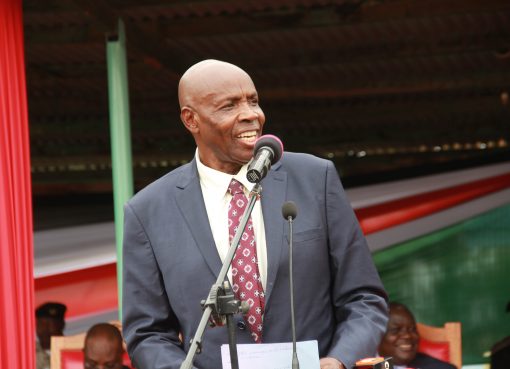In the Arid and Semi-Arid Areas of the North Eastern Region of Kenya of Wajir County, a project by the National Government of Kenya has endeavored to ensure that area residents have something to smile about at the end of the day.
The construction of water pans throughout in Ademasajida in Biliq village has restored livelihoods for the pastoral community.
The water pans, which collect and store rainwater, are part of the Kenya Climate Smart Agriculture Project, a core programme under the North and North Eastern Development Initiative (NEDI), a $ 1.5 billion project initiated by the National Government of Kenya in collaboration with the World Bank and other stakeholders.
More than 1,000 people now have access to affordable water sources for themselves and their livestock.
During the launch of the Tawakal Water pan project in Biliq, residents sang, danced and jumped joyfully as they celebrated and praised God for granting them their biggest wish: water. The thrill of a whole village revolved around the Tawakal Water Pan; whose construction brought with it a ray of hope.
The water pan, an investment under the World Bank sponsored Kenya Climate Smart Agriculture Project (KCSAP) stores rainwater, improving pastoral livelihoods.
Before the pans were installed, water came at a relatively high cost for this community. For decades, women and girls in Wajir—a sweltering, water-scarce county—have trekked daily for long distances and insecure routes in search of water.
On a good day, they would get the precious commodity from County Government funded water boozers, vehicles with tanks that supply water to remote areas.
According to a report by NEDI, before the launch of the programme, lack of access to safe and affordable water was among the major challenges to improvement of livelihoods of pastoral communities in Wajir County and North Eastern region at large.
“When the water boozers failed to show up, we were forced to walk over 30 kilometers for a whole day in scorching sub to the water points with our entire livestock,” said Fatuma Mohamed, a livestock farmer in Biliq village.
Wajir County is one of 10 counties benefitting from the $1.5 billion World Bank-funded North and North Eastern Development Initiative (NEDI), which aims to reduce development gaps in the region.
KCSAP is a core NEDI programme focused on increasing agricultural productivity and building resilience to climate change for Kenya’s smallholder farmers and pastoral communities.
“The Kenya Climate Smart Agriculture Project provides a great opportunity for the communities and county governments to make specific investments like these that will have a sustainable impact on the livelihoods of both crop farmers and livestock keepers,” observed Wajir Deputy County Governor Ali Ahmed Mukhtar.
“It’s heartening to see resilience shown by the communities during this concurrent crisis of the COVID-19 and the locust attack as they continue to leverage the KCSAP project to enhance their livelihoods,” he said.
The Tawakal Water Pan was constructed in 2019 with a water harvesting capacity of nearly 45000 m3 at a total cost of about Sh17 million to ensure water availability for domestic and livestock use especially during the dry seasons.
The pan serves more than 1,000 direct beneficiaries, of which 50% are female, who now have water within close reach for themselves and an estimated 9,500 livestock.
In addition to allowing easier access to water for domestic and livestock use, some additional benefits of the water pan include available water at minimum cost; since women and girls no longer have to

spend a lot of time searching for water, they can now engage in other productive and income generating activities, with the girls concentrating on full-time schooling while women have opened food kiosks near the water pan to sell food to the herders who bring their animals to drink.
“In addition, livestock production has been enhanced due to the reduced distance to the watering point, from 30 kilometres to two kilometres,” noted Omar Bule, the coordinator overseeing the project.
According to Omar Bule, other benefits of the project include increased enrollment of children in the local primary school, harvesting of the surface water run-off which has reduced flash floods and the water pan has contributed to building the resilience of the people of Biliq village to climatic shocks.
To sustain the water pan, a community-led management committee charges a small fee for the livestock taking water from the Tawakal water pan. The fee helps with maintenance, such as desilting the inlet and other works. The Biliq community has been trained to undertake catchment protection activities to ensure longer term water harvesting and minimize siltation into the pan.
“The water pan has brought hope and restored the dignity of people and a land ravaged by hunger and thirst for ages,” observed Mohamed Adan AbdulKarim, Chief of Ademasajida Ward, in Wajir West Sub County where the water pan is situated.
A similar project has been implemented by National Disaster Management Authority at a cost of Sh17.5 million is the Shalatey water pan in Wajir East.
The 50,000 m3 capacity facility targets at improving community preparedness towards building their resilience to drought.
According to Said Ahmed Sayid who is overseeing the project, the water pan has led to improved quality water availability, accessibility and utilization for domestic, livestock and irrigation use.
“Other benefits of Shalatey water pan include improved livestock production through growing and conservation of fodder, increased crop production leading to food security and improved community access to food and dietary diversification,” reiterated Said.
“Beneficiaries of the project include 1008 individuals comprising 444 males and 564 female. Others are 3 schools, 1 dispensary and 12,500 livestock,” disclosed Said.
The project which was completed late August was handed over to the community for utilization last month.
By Donald Ngala





